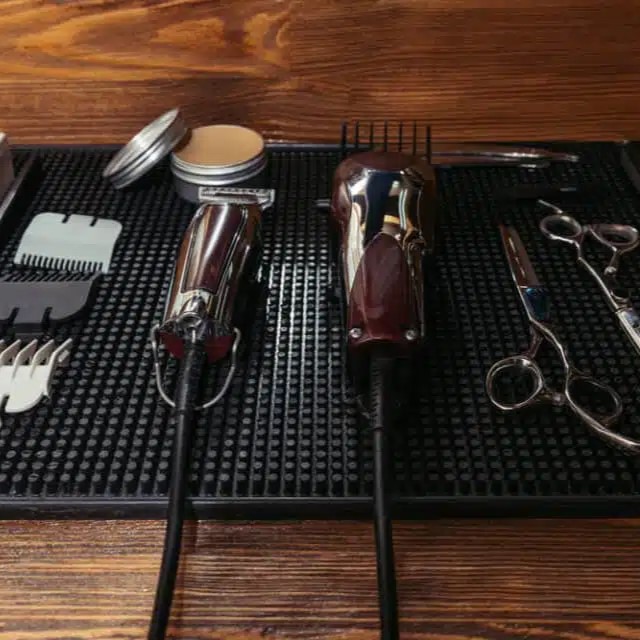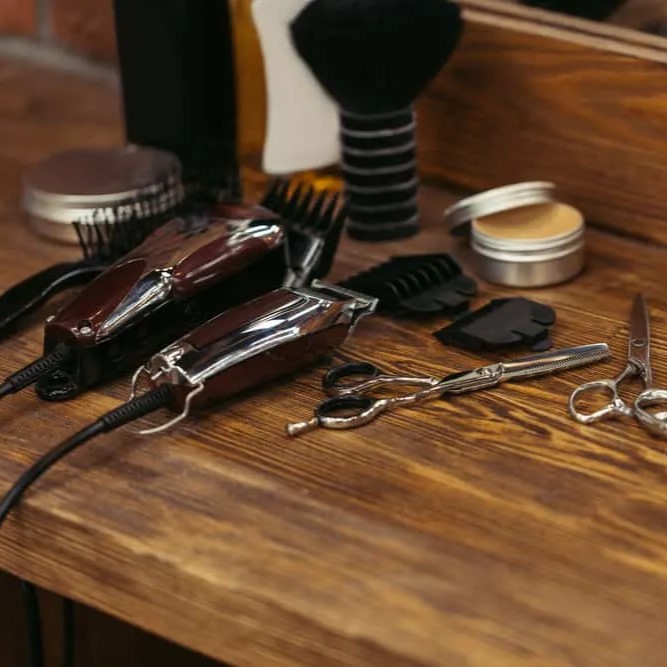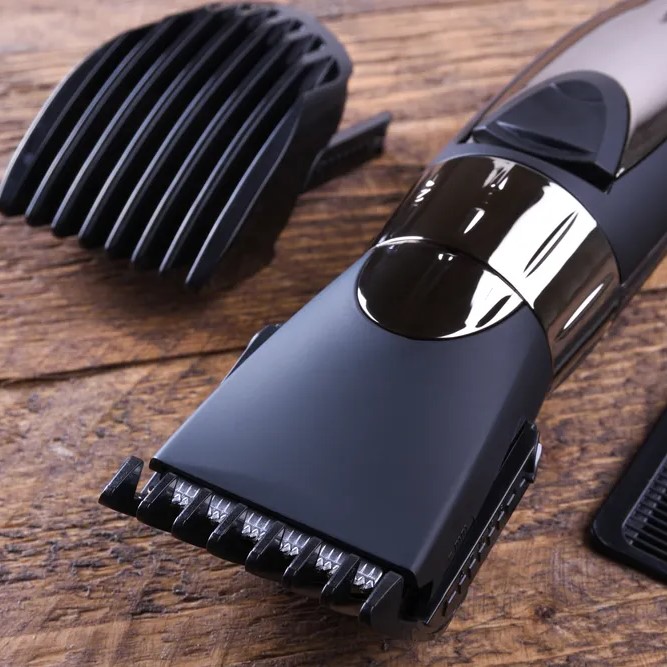Hair clippers are essential tools for anyone involved in hair grooming, whether it’s for personal use or professional styling. Over time, like any other cutting instrument, they can become dull, leading to subpar performance during haircuts. For this reason, knowing how do you sharpen hair clippers is a vital skill for barbers and home users alike. In this article, we’ll explore various methods and techniques for sharpening hair clippers, ensuring their longevity and effectiveness, while also providing practical tips along the way.
Do Your Clippers Really Need Sharpening?
Before diving into the methods of sharpening hair clippers, it’s crucial to first determine if it’s necessary. Many times, your clippers may seem dull when, in reality, they only need a thorough cleaning. Dirt, debris, and hair accumulations can impede the blades’ performance, making them appear blunt.

To check if your clippers really need sharpening, start by cleaning them meticulously. Remove any hair, dirt, and debris from the blades and the surrounding areas. After cleaning, lubricate your clippers according to the manufacturer’s instructions. This simple maintenance might restore their performance without the need for immediate sharpening.
Additionally, consider how frequently you use your clippers. Frequent use on coarse or thick hair could justify regular sharpening intervals. On the other hand, clippers used sparingly or on fine hair may not require frequent honing.
In summary, before you proceed with any form of sharpening, ensure that your clippers are clean and well-lubricated. These steps can save you both time and effort from unnecessary sharpening.
Signs Your Clipper Blades Need Attention
Observing the condition of your hair clipper blades is crucial for optimal performance. Here are some signs that your blades might need some attention or sharpening:
- Uneven Cutting: If your clippers start to pull hair or cut unevenly, the blades might be dull.
- Visible Debris or Rust: Check for visible signs of rust or trapped debris between the blades.
- Increased Noise or Vibration: A change in the sound or an increase in vibration could indicate blade issues.
- Difficulty in Cutting through Hair: If it becomes harder to cut through hair, your blades could be dull.
Regular checks will help you maintain your clippers in top condition and enhance their longevity.
Method 1: Sharpening With Diamond Stones
Sharpening hair clippers with diamond stones is a reliable method for restoring blade sharpness. Diamond stones are valued for their durability and efficient material removal. Here’s how to sharpen your clippers using diamond stones:
Step-by-Step Guide to Diamond Stone Sharpening
- Clean Your Blades: First, ensure that the blades are free from hair and debris. Use soap and warm water to clean them thoroughly.
- Disassemble the Clipper: Carefully unscrew the blades from the clipper body. Handle them with care to avoid damage.
- Inspect the Blades: Look for signs of wear or dullness. This will help you understand where to focus your sharpening efforts.
- Use Fine Grit Diamond Stones: Start with a fine grit stone. These stones remove less material and prevent excessive wear on the blade.
- Sharpen the Blades: Hold the blade flat against the stone. Slide it back and forth, applying even pressure. Perform this action about 10 times per side.
- Check Your Progress: After sharpening, check the blade edge for uniformity and sharpness.
- Polish If Needed: You may follow up with an extra-fine diamond stone for a polished edge. Repeat the sharpening motion for a smoother finish.
- Clean and Oil: Once sharpened, clean the blades again. Apply clipper oil before reassembling the clippers.
By following these steps, you ensure that your hair clippers are sharp and functional. This maximizes efficiency and delivers a smoother haircut.
Method 2: Alternative Sharpening With Emery Cloth or Sandpaper
If diamond stones are not available, emery cloth or sandpaper offers a practical solution. These materials are generally accessible and can restore dull blades effectively. Here’s a guide on using sandpaper to sharpen your hair clippers:
How to Use Sandpaper for Sharpening
- Prepare Sandpaper: Obtain fine and extra-fine grit sandpaper from a local store.
- Clean Your Blades: Make sure the blades are free of hair and debris.
- Detach Blades: Use a screwdriver to remove the blades from the clippers.
- Secure Sandpaper: Place the sandpaper on a flat surface, like a hardcover book.
- Sharpen Blades: Press blade against the sandpaper. Slide it forward and back 10 times per side.
- Repeat on Extra Fine Grit: Use extra fine sandpaper for a polished finish. Do the same sliding motion.
- Assess Sharpness: Feel the edges of the blade to confirm increased sharpness.
- Clean, Oil, and Reassemble: Clean blades, apply oil, and reattach to clippers.
This method ensures that your hair clippers regain their cutting efficiency. It’s an effective technique that requires simple tools and can be completed at home.
 The Importance of Regular Maintenance and Cleaning
The Importance of Regular Maintenance and Cleaning
Regular maintenance and cleaning are crucial for keeping your hair clippers in top shape. Not only does it extend the lifespan of the clippers, but it also ensures they perform optimally. Here’s why regular upkeep is essential and how you can go about it:
- Prevents Build-up: Hair, oil, and debris can accumulate on the blades. Cleaning them prevents this build-up, ensuring smoother operation.
- Maintains Sharpness: Regular cleaning helps to maintain the sharpness of the blades, reducing the need for frequent sharpening.
- Enhances Performance: Clean clippers cut hair more efficiently. They operate faster and provide a more comfortable user experience.
- Avoids Overheating: Clippers clogged with hair and debris may overheat. This can damage both the blades and the motor.
Simple Steps for Maintenance and Cleaning
- Turn Off and Unplug: Safety first. Always turn off and unplug clippers before cleaning.
- Brush Off Hair: Use a small brush to remove hair from the blades and the clipper body.
- Clean Blades: Dip a cloth in soapy water and wipe the blades. Ensure they are debris-free.
- Dry Thoroughly: After cleaning, dry the blades completely to prevent rust.
- Lubricate: Apply a few drops of clipper oil to the blades. This keeps them moving smoothly.
- Store Properly: Keep your clippers in a clean, dry place to avoid dust accumulation.
By following these simple steps, you ensure your hair clippers are ready for the next use, providing you with the best performance for a longer period.
When to Consider Professional Sharpening Services
Considering professional sharpening services for hair clippers can be a smart move. Here are instances when this option makes sense:
- Lack of Time or Experience: If you’re short on time or new to sharpening, a pro can help. They have the skills and equipment to do it quickly and efficiently.
- High-End Clippers: For expensive, professional-grade clippers, expert sharpening ensures top performance. It also helps maintain the warranty in some cases.
- Unsatisfactory Home Sharpening Results: If you’ve tried sharpening at home but aren’t happy with the outcome, a service can rectify the issue.
- Convenience: Sometimes, the convenience of professional services outweighs the effort of doing it yourself.
- Damaged Blades: When blades are damaged, a professional may be able to repair them. This might not be possible with DIY methods.
Choosing a professional service means your clippers get expert attention. This can translate to smoother cuts and a longer life for your clippers. When selecting a service, choose one with good reviews and a reputation for quality. Remember to ask about their process and if they have experience with your clipper brand. This ensures your blades are in capable hands.
Deciding Between Blade Replacement or Sharpening
Deciding whether to replace or sharpen your clipper blades is important. Here’s how to make an informed choice:
- Assess Blade Condition: Examine your blades closely. Look for signs of extreme wear or damage. Deep nicks, severe rust, or visible flat spots on the blade edges suggest replacement might be necessary.
- Consider Blade Cost and Availability: Sometimes, the cost of a new set of blades is comparable to or less than extensive sharpening. Also consider if specific blades are readily available for your clipper model.
- Evaluate Blade Material: Some blades are made from higher quality materials that can withstand multiple sharpenings without degrading the cutting quality. Lower quality blades might not sharpen well and are better off replaced.
- Usage Frequency: If you use your clippers frequently, particularly on coarse or thick hair, they may need to be replaced more often, even if regularly sharpened. Occasional users might get more life from blade sharpening.
- Sharpening Skill and Tools: If you have the right tools such as fine grit diamond stones or emery cloth and are proficient in sharpening techniques, you can opt to sharpen the blades. However, if you lack the time or skills, blade replacement could be more practical.
Before deciding, try cleaning and lubricating your blades. This could improve performance without the immediate need for sharpening or replacement. If performance doesn’t improve, refer to the points above to decide your next step.
 The Benefits of Investing in Quality Sharpening Tools
The Benefits of Investing in Quality Sharpening Tools
Investing in quality sharpening tools can yield numerous benefits for maintaining your hair clippers. High-quality tools can offer precision, reliability, durability, and a safer experience during the sharpening process. Let’s delve into the advantages these investments bring.
- Precision Sharpening: Quality tools provide superior control, leading to sharper blades. This precision ensures even cuts and minimizes hair pulling, making haircuts more comfortable.
- Extended Blade Life: By removing less metal and avoiding damage, good tools help extend blade life. This leads to fewer replacements and saves money in the long run.
- Durability: High-grade materials used in quality sharpening equipment resist wear. They remain effective over many uses, making them a cost-effective choice.
- Safety: Proper tools reduce the risk of injury. They are designed to keep the blade stable during sharpening, protecting your hands.
- Consistent Results: With top-notch tools, you get the same great results each time. This consistency is crucial for professional hair stylists and home users alike.
- Ease of Use: Quality equipment often comes with user-friendly features. These make the sharpening process easier, even for beginners.
- Time-Efficiency: Effective and well-designed tools make the sharpening process quicker. This saves you time, allowing you to focus on cutting hair rather than maintaining your tools.
In short, investing in the right tools not only helps you maintain your hair clippers effectively but also contributes to the overall quality of haircuts. It ensures the longevity of your clippers’ blades and provides an enhanced cutting experience. When considering blade sharpening, don’t hesitate to opt for quality sharpening tools; they are worth the investment.
